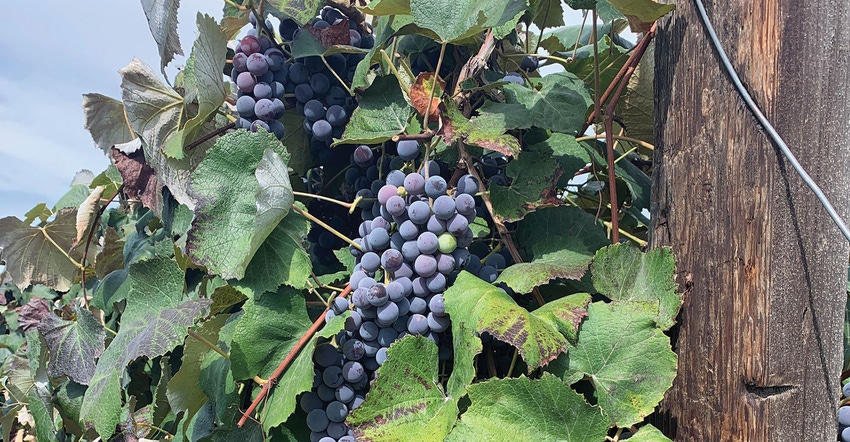
Here’s the Washington State Grape Society’s take. “2020 production was down slightly from our normal average and lower inventories are translating into an uptick in demand.”
That’s according to Trent Ball, director of the Yakima Valley College Vineyard/Winery Technology Program.
While the COVID-19 crisis depressed a lot of normal functions, it also meant that families spent more time hunkering down at home and ultimately that meant an increase in consumption of juice, jams, and jellies and a boost for growers of Concord grapes.
Ball called it “a lot of positivity” between the relationship of supply and demand as grower prices went up.
“It’s always a question of cask price versus demand and the big takeaway is the inventory situation,” he said. “At existing levels of production, signs point to an increase in prices in 2021 from where it was this year, roughly $205 a ton, well up from 2019’s $170 a ton. As overall U.S. production of Concord has dropped by nearly 70,000 tons, Washington growers can anticipate a significant increase in their per-ton pricing.”
While Washington State’s production is lower than it has been, it “should be up in 2021 because grapes are cyclical,” Ball said. “They tend to have high production years, then they’ll go down slightly the next, then up again, so we anticipate production in Washington will be up from where it was last year and the cash price will be up as well.”
Planted acreage numbers have been on a steady decline in recent years, but Ball has an explanation for that. “The decline started when the cash price hit an all-time low in 2014-2015,” he said. “It was down around $110 a ton at the time and growers started looking for alternative crops like hops. We saw a lot of acreage removed as vineyards started to age into 15-20 years and come to the end of their life. Growers were trying to decide whether or not to replant or switch commodities because the price wasn’t much of an inducement.”
For those who did decide to replant, a big pocketbook and lots of patience were required with no production in Year One, partial production in Year Two, increased numbers in Year Three, but not until Year Four was full production achieved.
‘It’s a volatile market’
For this year, Ball said: “I don’t think we’re going to see any dramatic decrease in acreage like we’ve seen in the past several years. We’ve come to a new equilibrium point with regards to product being produced versus product being sold. It’s a volatile market and the Concord industry is an example of that volatility because of its cyclical nature. Prices rise and prices fall, just the market’s way of regulating supply and demand.”
In Washington State, several processors have influence in the marketplace with one, Welch’s owned by National Grape, producing the lion’s share of the country’s Concord crop, almost entirely in the Yakima Valley.
After keeping a close eye on the industry’s track record for decades, Ball remains optimistic about the future.
“Call it ‘controlled optimism’,” he said. “In this volatile market, things change quickly because of finicky consumers and the impact of imported juice grapes. At least by today’s standards, a grower could make a living if he could be in that $225 to $250 a ton range.”
For more news on pests, disease management and other issues affecting vineyards, subscribe to the bi-monthly newsletter The Grape Line.
Read more about:
GrapesAbout the Author(s)
You May Also Like




